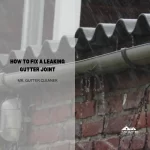Mold growth in homes results directly from the presence of moisture, a common aftermath of water damage. This unwanted moisture can stem from various sources, including leaks, floods, and condensation, creating ideal conditions for mold spores to thrive.
Homeowners must understand the critical link between water damage and mold to effectively prevent the latter’s emergence and safeguard their living spaces.
Immediate action following water exposure—such as drying out affected areas, using dehumidifiers, and ensuring good ventilation—plays a pivotal role in mold prevention.
Furthermore, recognizing early signs of mold, like musty odors or visible growth, allows for timely intervention.
This introduction sets the stage for a comprehensive exploration of how water damage can lead to mold in homes, underscoring the importance of proactive measures and homeowner awareness in maintaining a healthy indoor environment.
Additionally, regular inspections for potential water damage sources, such as plumbing leaks or roof issues, can help homeowners identify and address problems before they escalate into mold growth.
Implementing preventative measures, such as sealing cracks and improving insulation, can further reduce the risk of moisture buildup and subsequent mold development. By staying informed about the latest advancements in mold prevention and remediation techniques, homeowners can better protect their families and preserve the integrity of their homes against mold-related issues.
What Is Mold and Why Is It a Concern?
Mold, a type of fungus, thrives in moist environments, making it a common concern in homes experiencing water damage. It reproduces through tiny, airborne spores that settle on wet surfaces, where they can start to grow within 24 to 48 hours. The presence of mold is a significant concern due to its ability to spread quickly and its potential health risks. Prolonged exposure to mold can lead to respiratory issues, allergic reactions, and other health problems, especially in individuals with compromised immune systems, the elderly, and children.
Understanding Mold Growth Conditions
Mold growth requires three key conditions: moisture, a food source (such as wood, drywall, or carpet), and suitable temperatures. Homes suffering from water damage offer the perfect environment for mold to flourish, especially in areas where the moisture remains unaddressed for an extended period.
Table of Contents:
- What Is Mold and Why Is It a Concern?
- How Does Water Damage Contribute to Mold Growth?
- Early Signs of Mold Following Water Damage
- Preventing Mold After Water Damage
- How to Safely Remove Mold Caused by Water Damage
- Legal and Insurance Considerations for Mold and Water Damage
- Case Studies: Effective Mold Remediation After Water Damage
Health Risks Associated with Mold Exposure
Exposure to mold can result in various health issues, ranging from mild allergic reactions to severe respiratory conditions. Symptoms often include coughing, sneezing, throat irritation, nasal congestion, and in severe cases, asthma attacks or lung infections. It’s crucial to manage mold growth promptly to mitigate these health risks.
How Does Water Damage Contribute to Mold Growth?
Water damage sets the stage for mold growth by providing the moisture mold spores need to develop. Whether it’s a result of flooding, leaks, or high humidity, water intrusion must be addressed quickly to prevent mold from becoming a larger problem.
The Relationship Between Moisture and Mold
Mold spores are omnipresent in the air, but they only become a problem when they land on wet or damp surfaces. This is why areas with water damage are particularly susceptible to mold outbreaks. The longer these areas remain wet, the more likely mold will grow and spread.
Identifying Common Sources of Water Damage in Homes
To effectively combat mold, it’s essential to recognize and rectify the common sources of water damage. This includes:
Leaks in Plumbing
Plumbing leaks, often hidden within walls or under floors, can create persistent moisture problems that go unnoticed until mold growth becomes visible.
Flooding and Natural Disasters
Floods and natural disasters can inundate homes with water, immediately creating conditions ripe for mold growth if the water is not promptly removed and the area thoroughly dried.
Condensation and High Humidity Areas
Areas of high humidity or with frequent condensation, such as bathrooms, kitchens, and basements, are prone to mold. Ensuring proper ventilation and humidity control in these areas can help prevent mold proliferation.
Early Signs of Mold Following Water Damage
Detecting mold early can significantly mitigate its impact on your home and health. After water damage, it’s crucial to be vigilant for signs that mold may be forming.
Visual Indicators of Mold in Your Home
Visual signs are often the first indication of mold growth. Look for patches or spots on walls, ceilings, or floors that may appear in shades of black, green, white, or yellow.
Peeling wallpaper or discoloration of surfaces can also signal mold presence.
Musty Odors and Other Sensory Clues
A musty, earthy smell is a strong indicator of hidden mold. This odor can be present even when mold is not visibly detectable, signaling its growth behind walls or under floors.
Trust your senses; if something smells off, mold may be lurking.
Preventing Mold After Water Damage
Preventing mold starts with swift action following any water intrusion. By addressing water damage promptly, you can stop mold before it starts.
Immediate Steps to Take After Water Damage
First, remove standing water and dry all affected areas thoroughly. Use fans and dehumidifiers to accelerate the drying process and keep air circulating. It’s essential to dry water-damaged areas within 24 to 48 hours to prevent mold growth.
Long-Term Strategies for Mold Prevention
Maintaining a dry and well-ventilated home is key to preventing mold. Regularly inspect your home for leaks and repair them promptly. Ensure your home’s ventilation is effective, especially in high-moisture areas like the kitchen, bathroom, and laundry room.
Enhancing Home Ventilation
Improve ventilation by using exhaust fans, opening windows when weather permits, and ensuring your HVAC system is properly sized and functioning. Consider adding a whole-home dehumidifier if you live in a high-humidity area.
Using Mold-Resistant Building Materials
When renovating or repairing, choose mold-resistant products such as drywall, paints, and primers designed to inhibit mold growth. These materials are especially useful in areas prone to moisture.
How to Safely Remove Mold Caused by Water Damage
Removing mold safely is crucial to maintaining a healthy living environment, especially after water damage. Homeowners can undertake some remediation efforts themselves for minor mold issues, but professional help is often needed for larger infestations.
DIY Mold Removal Tips
For small areas affected by mold (less than 10 square feet), consider DIY removal. Start by wearing protective gear, such as gloves, masks, and goggles, to avoid exposure. Clean the area with a mixture of water and detergent, but avoid using bleach since it does not prevent mold from returning. Ensure the area is well-ventilated during and after the process. After cleaning, dry the area thoroughly to prevent the mold from returning.
When to Call a Professional Mold Remediation Service
For extensive mold growth or if mold is in the HVAC system, it’s essential to call in professionals. They have the equipment and expertise to safely remove mold and prevent its recurrence. Professional services are also recommended if anyone in the household has health issues that could be exacerbated by mold exposure.
Legal and Insurance Considerations for Mold and Water Damage
Understanding your rights and obligations, as well as how insurance policies cover mold damage, is crucial for homeowners facing mold issues after water damage.
Understanding Your Homeowner’s Insurance Policy
Many insurance policies have specific clauses regarding mold damage, often requiring prompt reporting and mitigation of water damage to be covered. It’s vital to review your policy and communicate with your insurer early in the process to understand your coverage and any required steps.
Legal Responsibilities and Rights Concerning Mold
Homeowners may have legal responsibilities to address mold, especially if it could affect neighbors or tenants. Conversely, if mold results from neglect or failure of another party to address water damage properly, homeowners might have legal recourse. Consulting with a legal professional can clarify these responsibilities and rights.
Case Studies: Effective Mold Remediation After Water Damage
Learning from others’ experiences can provide valuable insights into effectively dealing with mold resulting from water damage.
Residential Success Stories
Real-life examples of homeowners successfully remediating mold can offer practical strategies and hope. These stories often highlight the importance of quick action, the effectiveness of professional remediation services, and the benefits of preventative measures.
Lessons Learned from Mold Remediation Projects
Common lessons include the necessity of thorough drying and repair after water damage, the value of regular inspections to prevent mold growth, and the importance of using mold-resistant materials in prone areas. These insights can guide homeowners in both remediation and prevention efforts.


